- AI Fire
- Posts
- 🥊 We Ranked The 4 Biggest AI Hustles (Which One Is The Easiest Money?)
🥊 We Ranked The 4 Biggest AI Hustles (Which One Is The Easiest Money?)
AI Content vs. Software vs. Agencies vs. E-commerce. We break down the cost, effort, and real money-making potential of each
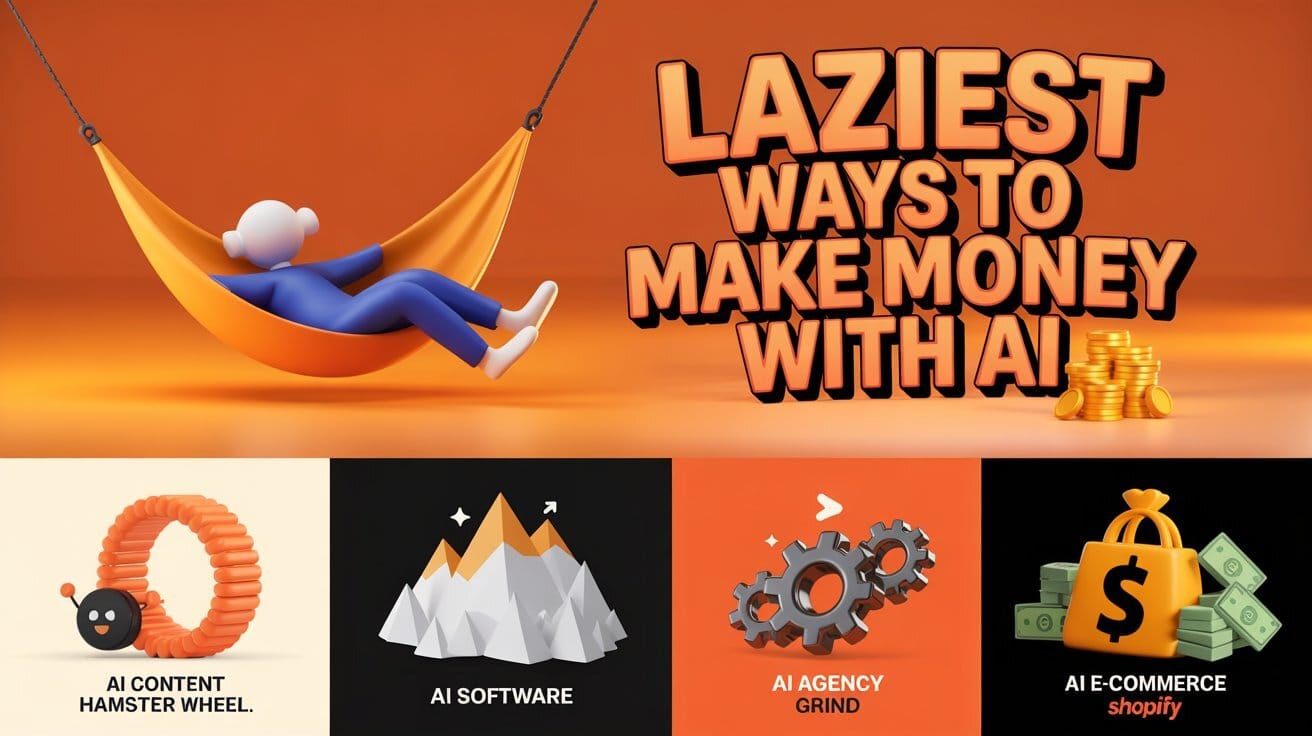
🤔 What's the Smartest AI Side Hustle for a Beginner?This guide ranks 4 popular AI business models. For someone just starting, which path offers the best blend of low difficulty and high potential? |
Table of Contents
The Art of "Lazy" Money: Ranking 4 AI Hustles from Easiest to Life-Changing
Let's be honest. In the past, making serious money online was incredibly hard work.
You had to be an expert in many different things all at once. You needed to be a marketer, a designer, a salesperson and a numbers expert. It meant long days and late nights, often feeling stuck to your laptop. The only known way to succeed was to work harder than everyone else, all the time.

Then AI arrived and completely changed the rules of the game.
Suddenly, starting a real, profitable online business became much, much easier. Powerful AI tools can now do the difficult work for you. Tasks that once required a whole team of expensive experts can now be done with just a few clicks.
But this creates a new kind of confusion. Everyone is talking about AI but which method is real and which is just hype? It's easy for a beginner to pick a path that's too expensive, too difficult or just a waste of time.

This guide cuts through all that noise. We’re going to put the four most popular AI business models under a microscope. We'll compare them side-by-side to show you which one is truly the smartest and easiest path for a beginner to start earning $100 a day or more.
Let's separate the hype from the real money.
Model #1: The AI Content Creation Hamster Wheel
This is the model you see everywhere. It's the shiny object that catches everyone's eye first. The concept is simple: use AI to generate an endless stream of hyper-realistic or just plain bizarre videos and images. You then blast these creations across TikTok, Instagram and YouTube, praying one of them catches fire with the algorithm. When it does, you get paid through ad revenue or affiliate sales. It’s the digital gold rush of the 2020s.
A Real-World Example:
I know a guy who is currently pulling in over $10,000 a month with a TikTok account that posts what most people would call "dumb" AI videos. His secret? He doesn't just post for views; he uses the videos to sell products.
Here’s his exact playbook:
He uses AI to generate borderline outrageous videos of fake people using or reacting to real products. Think of an AI-generated caveman discovering a solar-powered fan hat.
He focuses exclusively on products that already have viral potential. The weird, quirky stuff you’d see on a "TikTok Made You Buy It" list.
He links these products in his TikTok Shop and earns a commission on every single sale his videos generate.

It’s a simple, rinse-and-repeat formula that prints money as long as the videos hit the algorithm just right.
How You'd Actually Do It:
The process is surprisingly straightforward.
Prompt Crafting: You'd use a tool like ChatGPT to come up with ridiculously detailed prompts for your video idea. The more specific the prompt, the better the result.
Video Generation: You'd plug that prompt into a high-end AI video generator like Google’s Veo. For example:
Your Input to ChatGPT: "Write me a prompt for Google Veo. I want an extremely realistic, cinematic video of a gorilla wearing a ridiculously oversized gold chain with a diamond-encrusted Jesus piece. The gorilla should look confused but also a little bit proud".
ChatGPT's Output: A long, technical prompt filled with keywords like "4K, cinematic lighting, shallow depth of field, detailed fur texture…"
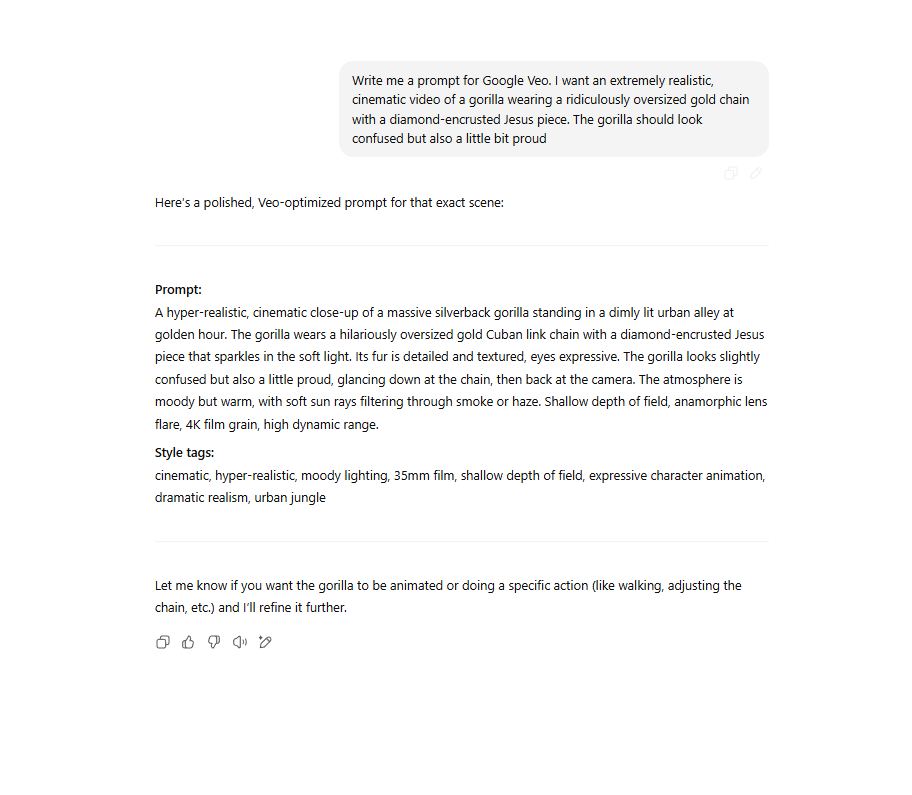
The Result: In less than a minute, you have a professional-looking video clip ready for social media.
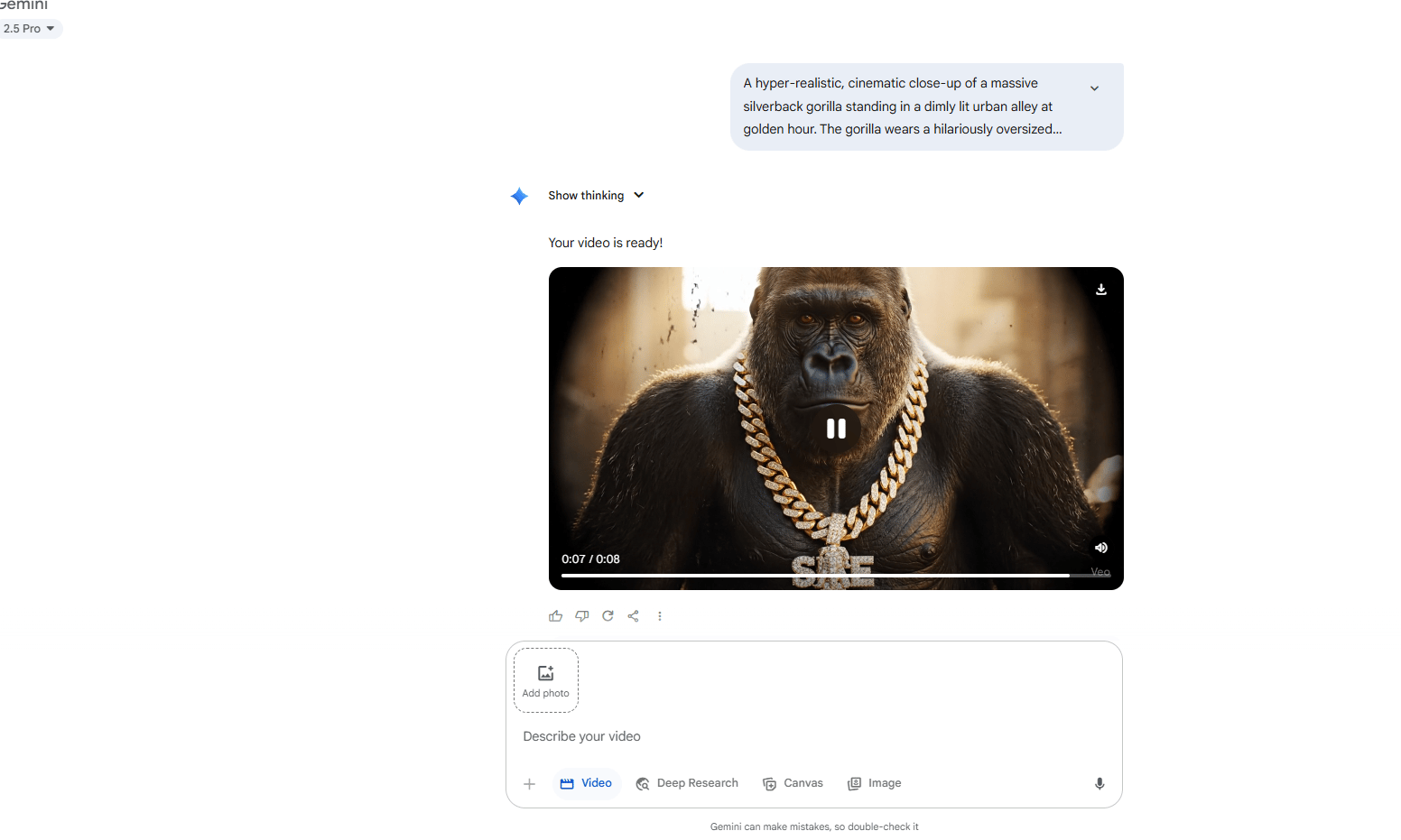
Distribution & Monetization: You post the video everywhere and anywhere, with links to the products you're promoting.

Learn How to Make AI Work For You!
Transform your AI skills with the AI Fire Academy Premium Plan - FREE for 14 days! Gain instant access to 500+ AI workflows, advanced tutorials, exclusive case studies and unbeatable discounts. No risks, cancel anytime.
The Verdict: A High-Effort, Low-Asset Trap
This model is seductive because it looks easy but it’s a dangerous trap for anyone trying to build a real business.
Tools Required & Monthly Cost:
AI Video Generator (Google Veo 3): A high-end tool is non-negotiable for quality. Cost: ~$120/month.
Prompt-Writing Assistant: A subscription to a service like ChatGPT-4 is key. Cost: ~$20/month.
Total Monthly Cost: ~$140.

Business Model Rating:
Difficulty: Easy. Your main job is being creative with prompts and staying consistent with posting.
Cost: Medium. High-quality AI video tools aren't cheap. You’re looking at around $140 a month.
Potential: Low.
Wait, "low potential"? But what about the $10k a month? That income is real but the foundation is made of glass. This model has three fatal flaws:
There's No Moat. A moat is a competitive advantage that protects your business. This model has none. The barrier to entry is the cost of two subscriptions. If you can do it, so can a million other people and they're all coming online this week. The space is already oversaturated.
You Are a Servant to the Algorithm. Your business success is not in your hands. It's in the hands of a few lines of code at Meta or ByteDance. When they decide to favor a different type of content, your income can vanish overnight. It’s like being a court jester whose job depends on keeping a notoriously moody king entertained.

You're Building Nothing of Value. You aren't building a brand. You aren't building a customer list. You are building content on someone else's platform to sell someone else's product. You own nothing. It's the digital equivalent of being a temp worker. It's a great way to make some extra cash but it's not a business.
This is a fantastic side hustle. It can be a fun way to make some extra cash. But it's not a sustainable, long-term business. It's the digital equivalent of working a temp job with a very fickle boss.
Model #2: The AI Software Developer's Gambit
The Big Idea: Building a Money-Printing Machine
This is the big one. The Silicon Valley dream. The path of building the next great AI software company - the next Jasper, the next Midjourney. The goal is to create a tool that thousands of businesses or individuals happily pay for every single month, generating a tidal wave of Monthly Recurring Revenue (MRR).
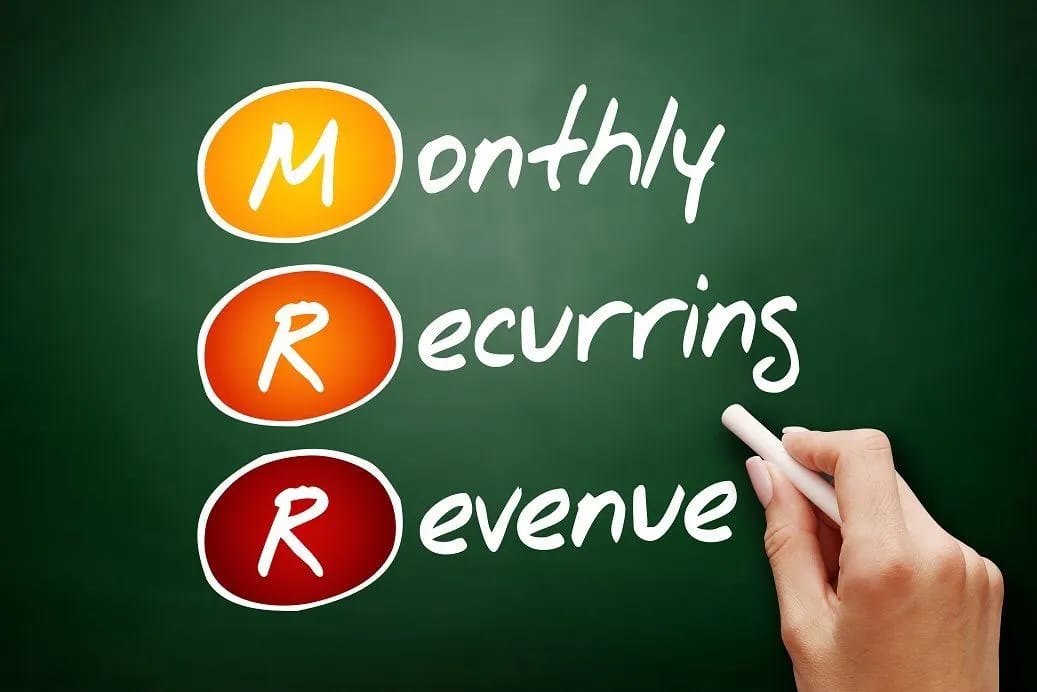
This is the path that creates "F.U. money". It's the model that can lead to generational wealth. When executed perfectly, a successful software business is the most powerful wealth-creation engine ever invented. There are stories of founders whose software companies reach a state of such high automation and profitability that they require only an hour of work per day, all while generating seven figures a year. It's the closest thing to a passive money machine that actually exists.

F.U. Money
A Sobering Look at the $30,000 "Minimum" Startup Cost
So why isn't this the recommended path? Because it's like telling someone who wants to get in shape that they should start by competing in the Olympics. The price of entry is staggering. That often-quoted "$30,000 minimum" isn't just a random number. Here’s what it really means.
Developer Salaries (2-3 Months): $20,000. To build even a "Minimum Viable Product" (MVP), you need at least one or two very skilled developers. This is where most of the money goes.
Cloud Infrastructure: $2,000. AI doesn't run on hopes and dreams - it runs on powerful servers from providers like AWS or Google Cloud and they charge by the minute.
Software & API Licenses: $1,000. The tools needed to build the tool cost money.
Initial Marketing & Launch: $5,000. Building the best product in the world is useless if no one knows it exists. This is your seed money for ads and PR.
Legal & Administrative: $2,000. Forming a company, trademarking a name and drafting a privacy policy all require lawyers.

And that's just to get to Day 1. It's the cost of your ticket to the race, not a guarantee you'll finish.
The Verdict: The Billionaire's Path, Not the Beginner's
This is the high-stakes table. The chips are expensive, the players are sharks and most people leave with nothing.
Business Model Rating:
Effort Required: Very High. This isn't a solo mission. It requires elite skills in product management, engineering, fundraising and marketing. It's the business equivalent of conducting a symphony while flying a helicopter.
Cost: Very High. You need a serious bankroll to even sit at the table.
Potential: Very High. The ceiling is a private jet and a company name everyone recognizes.
This is the billionaire's path. If you have the money, the skills and the stomach for high-stakes risk, go for it. For everyone else, trying to start here is like trying to learn how to swim by jumping into the middle of the Pacific Ocean.

Model #4: The AI Automation Agency Grind
(Note: I'm skipping to #4 for a reason. You'll see why in a moment)
The Big Idea
You start an agency that sells AI services directly to other businesses. You become the "AI guy" for companies that are desperate to automate but have no idea how.
This is a very popular model right now because the demand is white-hot. Businesses are practically throwing money at anyone who can help them implement AI to cut costs and increase profits.

What You'd Actually Sell:
AI Sales Reps: Systems that can handle initial lead qualification and appointment setting.
AI Customer Support: Chatbots and systems that can resolve common customer issues automatically.
AI-Powered Company Management: Tools that can analyze internal data and provide insights to leadership.
Custom Automations: Connecting different software tools to streamline a company's unique workflow.

Market Demand: Businesses are desperate for AI solutions and will pay premium prices for properly implemented systems. The right clients will pay thousands of dollars monthly for effective automation.
The Hard Truth About This Model
While it sounds great on paper, this is another trap for people looking for a "lazy" way to make money.
The Skill Set is High: You can't fake this. You need to have a deep, practical understanding of AI tools and how they apply to real business problems.
You Need to Be a Salesperson: Your primary job is convincing business owners to hand you thousands of dollars every month. This requires serious sales and communication skills.
It Doesn't Scale Easily: At the end of the day, you're trading your time for money. Even at a high hourly rate, there are only so many hours in a day. To grow, you have to hire a team, which adds a whole new layer of complexity.
Clients Are Demanding: When a business is paying you $5,000 a month, they expect you to be on call. This is not a passive business; it's a high-paying, high-stress job that you own.

The Verdict: A High-Paying Job, Not a "Lazy" Business
This path can lead to a fantastic income but it's a grind. It's the definition of trading time for money, albeit at a very high rate.
Tools Required & Monthly Cost:
Professional AI Subscriptions: Pro-tier access to the best AI tools. Cost: ~$100/month.
Client Management Software: A CRM to keep track of your projects and communication. Cost: ~$50/month.
Total Monthly Cost: ~$150.
Business Model Rating:
Effort Required: High. You need to be a dual-threat: a technical expert and a smooth-talking salesperson.
Cost: Very Low. You can start this business with a laptop and a phone.
Potential: Medium. A solo operator can realistically build a solid six-figure income. Scaling beyond that, however, requires hiring a team and becoming a full-time manager.

This isn't a bad option but it's not a system that works for you. It's a system where you are the core component. That's the opposite of a "lazy" business.
Why It's Not "Lazy": You're essentially running a high-paying consulting business. Clients expect constant availability and results. While profitable, it's more like a well-compensated job than a truly passive business.
Model #3: AI E-commerce - The Beginner's Goldmine
The Big Idea: Supercharging a Proven Model
You use AI tools to sell physical products online. That’s it. It’s the classic e-commerce model but supercharged with an AI assistant that does most of the hard work for you in the exploding world of AI E-commerce.
This is my #1 recommendation and it's not even close. This is the model that offers the perfect blend of low difficulty, high potential and true "lazy" income once you get it set up. With today's AI tools, the entire process has become 10 times easier, faster and cheaper.

The "Daniel" Case Study: From $38 to $10,000 in 30 Days
One of the most compelling recent case studies is that of a 17-year-old named Daniel. He started with just $38 in his bank account. By applying AI to the e-commerce model, he crossed his first $10,000 in sales in under a month. The online store built with this AI E-commerce strategy is now consistently generating nearly $1,000 a day in revenue.
This isn't a far-off theory. During the time it takes to watch a single YouTube video about his story, his Shopify store notifications will pop up with another $70 in sales. It's a real-time example of a system at work.

How AI Has Transformed E-commerce:
Product Research: You used to spend weeks searching for a "winning" product. Now, AI can analyze market trends, supplier data and social media buzz to hand you a list of potential bestsellers in minutes.
Website Building: Building a professional-looking online store used to take days or cost thousands. Now, AI can generate a beautiful, high-converting Shopify store, complete with product descriptions and images, in a few hours.
Ad Creation: You no longer need to be a marketing genius. AI can write ad copy, generate images and videos and even manage your ad campaigns for you.
Daily Operations: AI can handle the majority of customer service inquiries, manage inventory levels and track your orders.

The AI E-commerce Process:
Product Discovery: Use AI to identify trending products.
Store Creation: AI builds professional Shopify stores
Content Generation: AI creates product descriptions, images and videos.
Marketing Automation: AI manages ad campaigns and optimization.
Customer Service: AI handles inquiries and support.

Scalability Potential: Another e-commerce store generated over $2 million in revenue before it was sold for a life-changing amount in 2023.
The Verdict: The Clear Winner for Accessible, Scalable Income
When all four models are put side-by-side, AI E-commerce is the undisputed champion for anyone starting out.
Tools Required & Startup Cost:
E-commerce Platform: A basic Shopify plan is the standard. Cost: ~$39/month.
AI Tool Suite: Subscriptions for research, content and ads. Cost: ~$50-$100/month.
Initial Ad Budget: This is your main investment, used to test products. Cost: $200 - $500.
Total Startup Cost: $300 - $600
Business Model Rating:
Effort Required: Medium. There is absolutely a learning curve. But the AI handles the most complex technical work. The owner's job is to be the strategist, not the technician.
Cost: Medium. It requires a modest amount of capital but is worlds away from the high costs of software development.
Potential: Very High. A successful e-commerce brand is a real, sellable asset. It's a proven path to seven-figure revenues. This was true even before AI. Now, the ceiling is even higher.
Why AI E-commerce Is the Clear Winner for Beginners:
It's the perfect storm. It's a proven, time-tested business model (e-commerce) that has been made exponentially more accessible by AI. You get the high-growth potential of owning your own brand without the insane costs of software or the client-chasing grind of an agency.
It allows you to build a real, scalable asset that can generate passive income for years to come. That is the definition of working smarter, not harder.

Creating quality AI content takes serious research time ☕️ Your coffee fund helps me read whitepapers, test new tools and interview experts so you get the real story. Skip the fluff - get insights that help you understand what's actually happening in AI. Support quality over quantity here!
The AI E-commerce Playbook: From Zero to $100/Day
So, what does this look like in practice? Here’s a quick-start guide to getting an AI E-commerce store off the ground and cash-flowing in about a month.
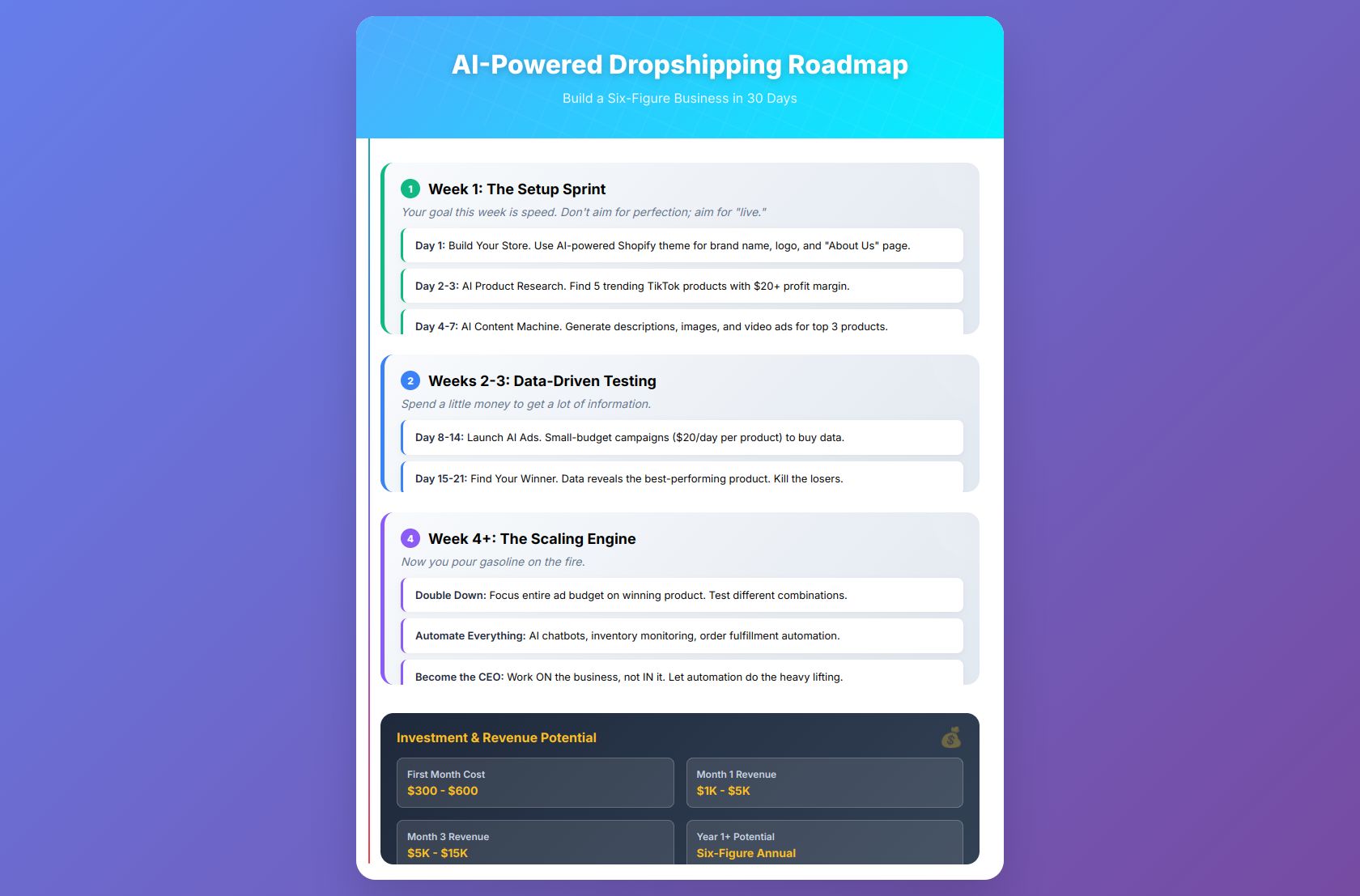
This is the system. This is how you build a machine that works for you instead of the other way around.
A Realistic Look at Costs and Revenue
Initial Investment Breakdown:
Store Setup: Often free or low-cost with intro offers.
Monthly Tools: $50 - $100.
Initial Advertising: $200 - $500 (this is the most important part).
Total First Month Cost: $300 - $600.
Plausible Revenue Potential:
Month 1: $1,000 - $5,000
Month 3: $5,000 - $15,000
Month 6+: $20,000 - $50,000+
Year 1+: Six-figure annual revenue is a very achievable goal.

Advanced Strategies for Maximum Laziness (and Profit)
Once your store is running, you can use AI to make it even more efficient and profitable. True "laziness" comes from building smart systems.
AI-Powered Product Testing: Instead of guessing what to sell next, command your AI to analyze social media trends, search volume data and competitor sales to predict the next "winner" before it even takes off.
The Automated Customer Journey: Build an AI system that handles the entire customer experience. It can answer initial questions, recommend products, offer upsells at checkout and send personalized follow-up emails to encourage repeat purchases.
Predictive Analytics: Use AI to look into the future. It can forecast how much inventory you'll need for the holiday season to avoid over-ordering or tell you the optimal price for your product to maximize profit.
Content Generation at Scale: Your AI can function as a full marketing team. It can write blog posts to attract customers through Google search, create daily social media content and design entire email marketing campaigns.

Common Pitfalls to Avoid on Your Journey
Many people fail, even with these powerful tools. They usually fall into one of these four traps.
Shiny Object Syndrome: This is the #1 killer of progress. An entrepreneur gets excited about a new AI tool or business idea and abandons their current project before it becomes profitable. The key is to stick with one business model until it works consistently. Focus on execution, not endless exploration.
Underestimating the Learning Curve: AI makes things easier but it doesn't eliminate the need to learn. You still need to understand the fundamentals of e-commerce, marketing and how to use your tools effectively. Expecting overnight success without any learning is a recipe for disappointment.
Neglecting Customer Service: You can automate 90% of customer inquiries but the final 10% requires a human touch. A single angry customer whose issue was ignored by a bot can create a social media firestorm. It's crucial to monitor your AI systems and be ready to step in when a real person is needed.
Ignoring Legal and Compliance Issues: Just because AI can generate content doesn't mean that content is always compliant with advertising platform rules or copyright laws. Make sure you understand the regulations for your products and that you have the proper business licenses and tax systems in place.

Your Path Forward: Tools, Challenges and the Future
The $100,000 Challenge: An Opportunity to Prove the Model
To show how effective this AI E-commerce model is, some industry leaders are running public challenges. A common format involves offering a significant cash prize - sometimes as high as $100,000 - to the person who can generate the most revenue with a new AI-powered store in a set period, like before the end of August. These challenges are powerful because they provide a clear deadline, a proven training path and a massive incentive to take action.

Essential Tools and Resources for Success
Recommended Learning Path: First, master the basics of e-commerce. Then, learn how to integrate the key AI tools. Finally, focus on digital marketing principles and building automated systems.
Success Metrics to Track: Don't just look at revenue. The most important numbers are your profit, your customer acquisition cost (how much it costs to get one customer) and your return on ad spend (for every $1 you spend on ads, how many dollars you get back).
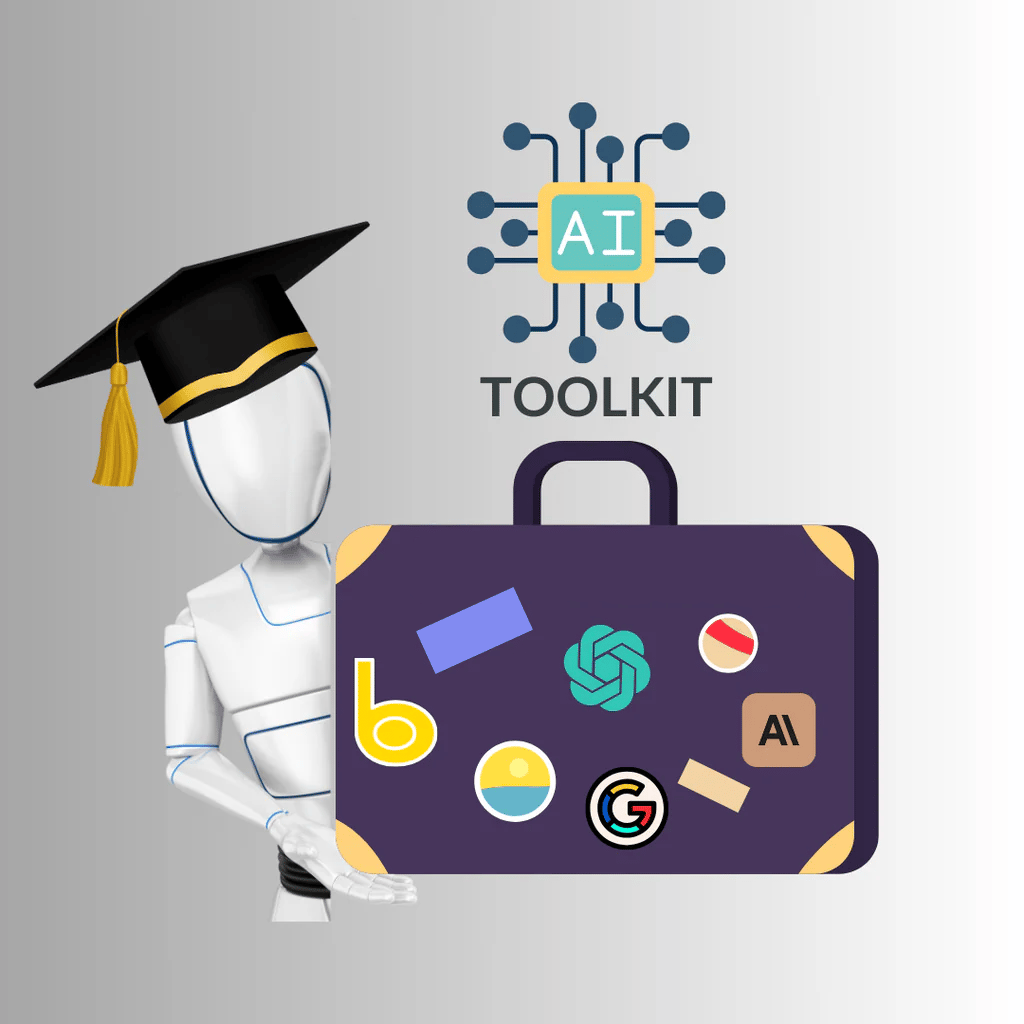
The Future of AI in Business
This is just the beginning. The trends show that AI tools will become even more powerful and easier to use. The businesses that start integrating these systems now will have a massive head start on their competition in the years to come.

Conclusion: Your Path to AI-Powered Wealth
The AI shift has created an unprecedented opportunity for individuals to build real wealth. While several paths exist, AI E-commerce offers the best combination of accessibility, scalability and passive income potential for anyone starting today.
Here are the key takeaways:
AI has dramatically lowered the cost and difficulty of starting a business.
AI E-commerce provides the best risk-to-reward ratio for beginners.
Success requires choosing one model and executing on it consistently.
The window of opportunity to be an early adopter is open right now.
The "laziest" way to make money isn't about avoiding work; it's about applying your work to a smarter system. AI allows you to build that system faster and more effectively than ever before. It handles the tedious tasks while you focus on strategy and growth.
The question isn't whether AI will change business - it already has. The only question left is what you will do about it. The tools are here, the opportunity is real and the time to act is now.
If you are interested in other topics and how AI is transforming different aspects of our lives or even in making money using AI with more detailed, step-by-step guidance, you can find our other articles here:
⭐ How would you rate this "How to Make Money with AI" blog post?Help us improve by picking one that best describes your thoughts: |
|
Reply